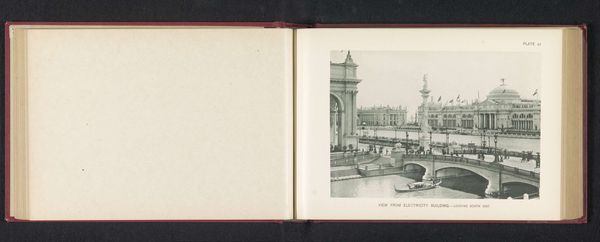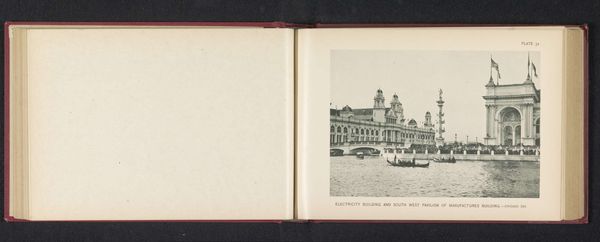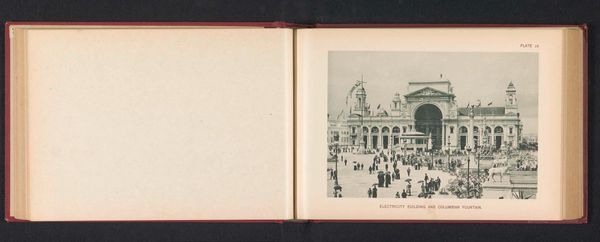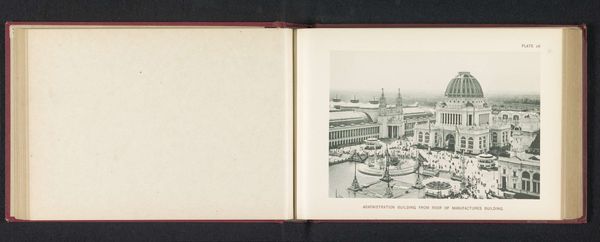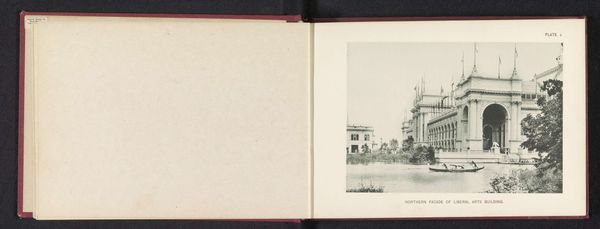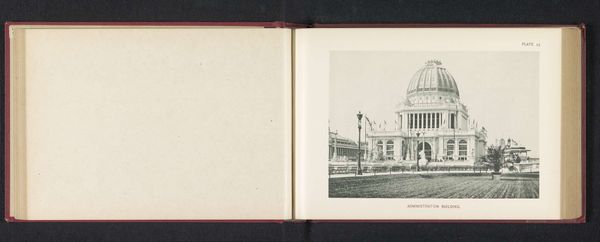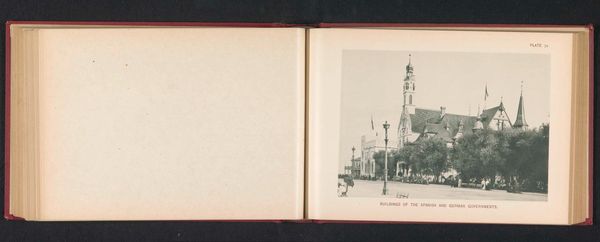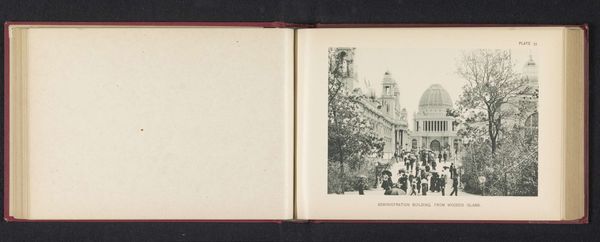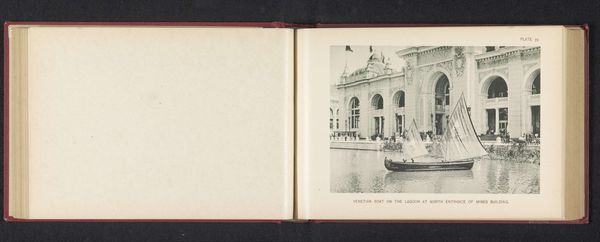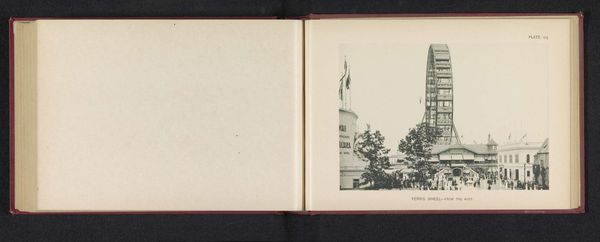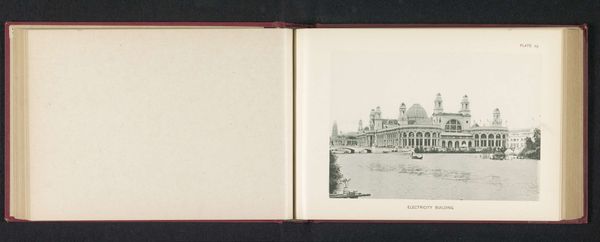
Gezicht op het treinstation bij de World's Columbian Exposition in Chicago in 1893 1893
0:00
0:00
print, photography
#
pictorialism
# print
#
landscape
#
photography
#
cityscape
#
modernism
#
realism
Dimensions: height 132 mm, width 192 mm
Copyright: Rijks Museum: Open Domain
Editor: This is Charles Dudley Arnold's photograph, “Gezicht op het treinstation bij de World's Columbian Exposition in Chicago in 1893,” or, “View of the Train Station at the World's Columbian Exposition in Chicago in 1893,” a print from 1893. I find it strangely unsettling for a scene of such supposed progress and celebration. What's your interpretation? Curator: I agree, that unease is palpable. Let's think about the Columbian Exposition itself. It was a deliberate projection of American power and industrial might, a sort of self-conscious performance of progress that simultaneously masked deep social inequalities and the violent realities of colonialism. Notice how the monumental architecture, meant to inspire awe and represent civilization, dwarfs the figures in the foreground. Editor: That’s a great point. There's a huge emphasis on the grandeur of the building and infrastructure. Curator: Exactly. The fair's narrative was one of technological advancement and a celebration of a white, Western ideal. Photography played a role by idealizing these visions. So, I ask you: Whose stories were not being told? Who was excluded from this narrative of progress? Consider the experiences of marginalized communities, laborers, and the Indigenous peoples whose lands were exploited to make this exposition possible. Editor: That really puts a different spin on what I'm seeing. It’s no longer just a record, but a constructed version of reality. The photo aestheticizes power...and its effects. Curator: Precisely. And thinking about that discomfort we felt initially – could that be a residue of this tension, the echoes of those silenced voices within this seemingly celebratory image? Perhaps the purpose isn’t so much celebratory but rather documenting a false truth. Editor: It’s powerful to consider photography as not just a reflection of its time, but a player in the power dynamics. Thank you, this was incredibly insightful. Curator: It's a vital lesson - art always exists within a context, often fraught with complexities and contradictions. Keep questioning what you see.
Comments
No comments
Be the first to comment and join the conversation on the ultimate creative platform.
